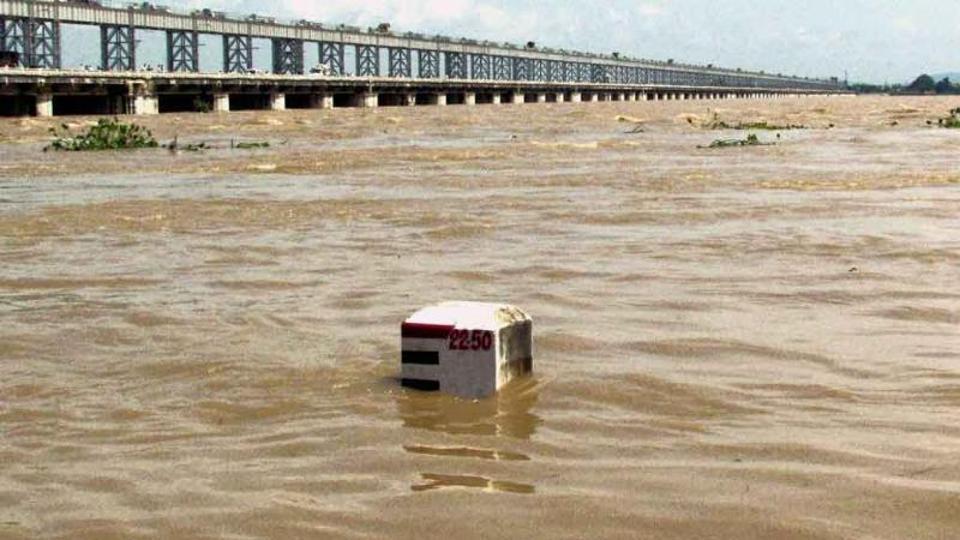The year is 2100. The glaciers of the Hindu Kush-Himalayan region – the world’s ‘Third Pole’ – are vanishing as the planet warms, the ice that once fed the great rivers of Asia is all but lost, and with it much of the water needed to nurture and grow a continent.
Further stressed by extreme heatwaves, erratic monsoons, and pollution, the waterways are in crisis and the lives of hundreds of millions hang in the balance. Access to clean water, now more precious than oil, is a preserve of the rich and has become a resource so valuable that people – and nations – are willing to fight for it.
This apocalyptic vision is the continent’s future if nothing is done to limit global warming, scientists and environmentalists warn.
“If urgent climate action is not taken rapidly, starting today, and current emission trends continue unabated, it is starting to look conceivable that this will entail grave threats to all of humanity as we know it,” according to David Molden, director general of the International Centre for Integrated Mountain Development (ICIMOD).
The 2015 Paris agreement saw nations commit to limiting global warming to two degrees Celsius above pre-industrial levels as a way of curbing the worst impacts of global warming.
A lower cap of 1.5C was set, only as a goal for nations to work towards. But this year’s Hindu Kush-Himalaya (HKH) Assessment Report says unless it is met – two-thirds of the region’s glaciers will be lost by the end of the century.
Running from Afghanistan to Myanmar, the HKH region takes in the Tibetan Plateau, and the Himalaya, Hindu Kush, and Karakoram mountain ranges.
Functioning as a vast water tower, some of the world’s largest and most important rivers, including the Brahmaputra, Ganges, Yangtze, Mekong and Indus, begin here.
Its health is inextricably linked to that of the continent: Some 1.65 billion people directly rely on these waters – for their lives and livelihoods. But tens of millions more rely on the agriculture, hydropower, and industries the rivers fuel.
“This is the climate crisis you haven’t heard of,” states researcher Philippus Wester adding that alongside glacier melt, there will be increased risk of floods, droughts, landslides and avalanches.
But many in Asia are already living this dystopian future. In Chennai, the year 2019 brought a drought so severe reservoirs ran dry. Residents were forced to queue for water from government tanks or pay black-market prices. In some cases, desperation led to violence.
Northern India was hit hard by floods as the Brahmaputra and Ganges burst their banks, with more than 100 reported dead and many more displaced. In Pakistan, thousands of glacial lakes have formed, with its mountain people facing the threat of at least 30 bursting.
In parts of China, villagers must choose between paying a premium for bottles or risk their health with the potentially contaminated stream or river water.
More than half the world’s population lives in Asia, but there is less fresh water available per person there than on any continent, according to the United nations. It often leaves the most vulnerable at risk.
“Climate change is rapidly diminishing our access to clean water, which will have a devastating impact on human health, access to food, and sanitation, radically reshaping communities and cities,” Philip Alston, UN Special Rapporteur on extreme poverty and human rights has stated. “As always, the poorest people are and will be the most affected,” he adds.
Asia’s rivers feed the continent’s breadbaskets and rice bowls – the Indus, Yangtze, and Yellow basins rely heavily on meltwater to irrigate agriculture that helps sustain not only those that live there, but national economies too.
Any change – either the initial surge of meltwater – or the later drastic decline in river flow could cause catastrophic food shortages, with Molden warning the worst-case scenario, if nothing is done to combat global warming, would be ‘starvation and conflict’.
Despite proclamations that we are in ‘the Asian Century”, there are fears lack of proper planning for the coming water crisis may stifle the economic dreams of a rapidly growing region.
Debra Tan, director of the NGO China Water Risk, adds: “Asia faces a triple threat in terms of water because. First some parts – including including China and India – have very limited water resources to develop. Secondly, climate change exacerbates scarcity, and finally our cities and populations are clustered along vulnerable rivers.”
Every key industry on the continent — from electronics and automobiles to clothing and agriculture — requires water but few use the resource judiciously.
Tan insists: “If the risks are not managed well, they will not only have detrimental consequences to billions of livelihoods but also to trillions of dollars of economic growth.”
It should be stated here that in a 2008 report, Goldman Sachs hailed water as the ‘the petroleum for the next century’, underlining fears its scarcity will lead to unrest.
Agencies
